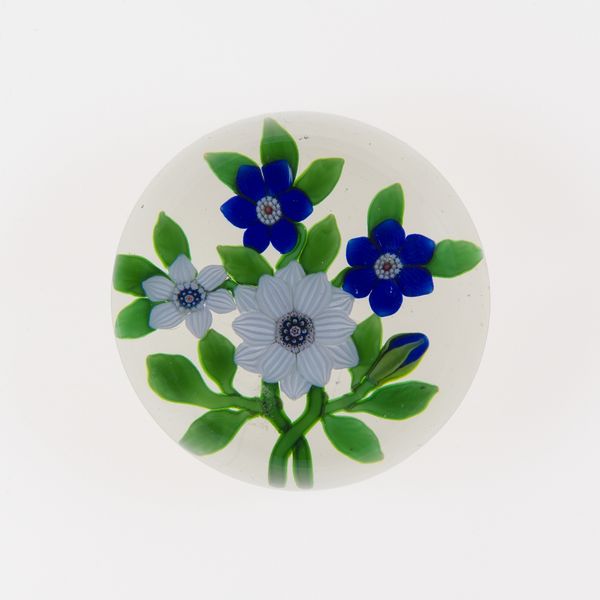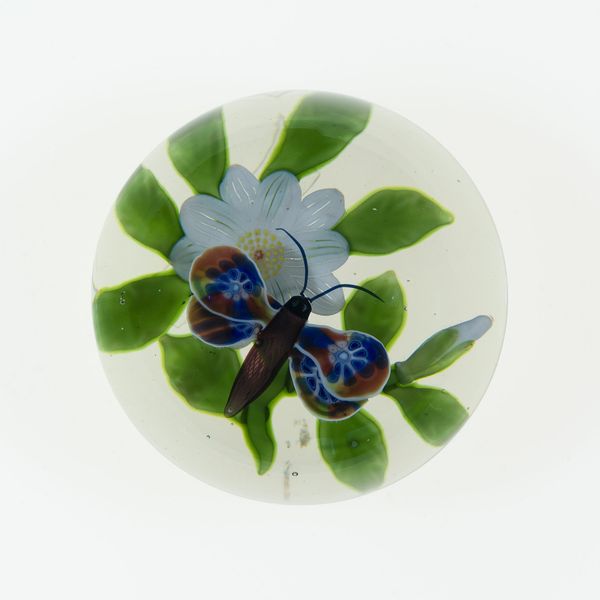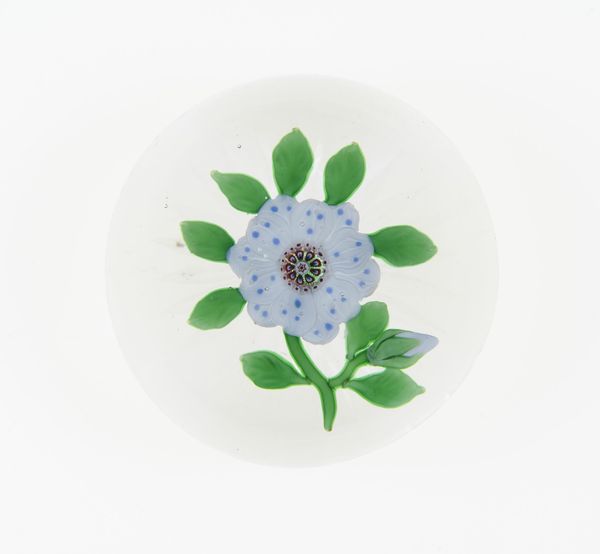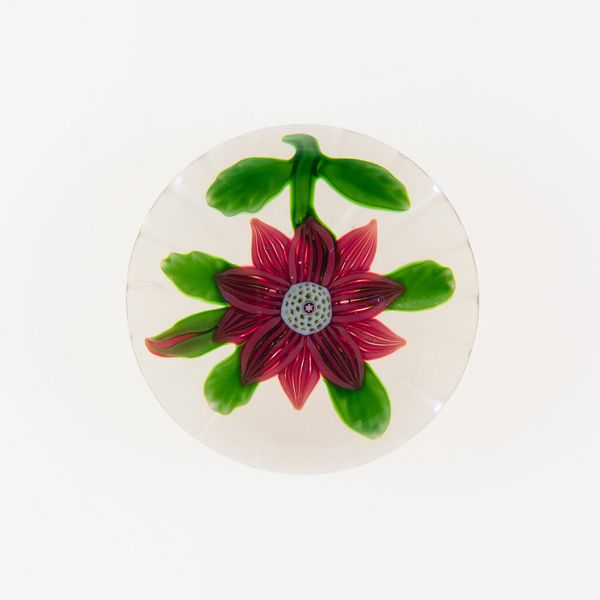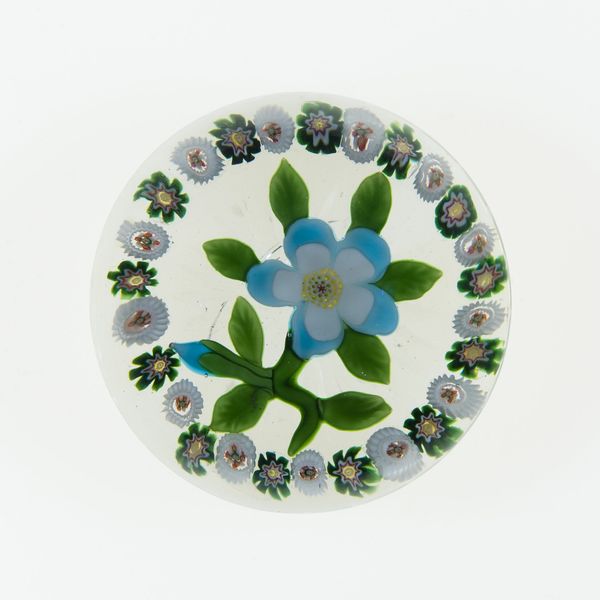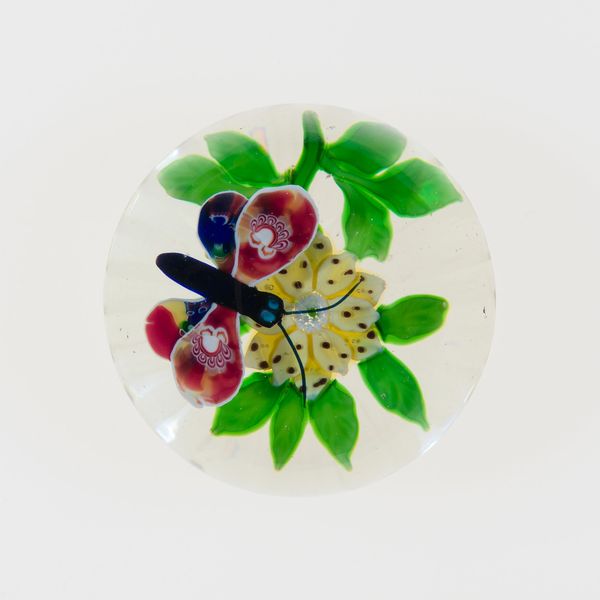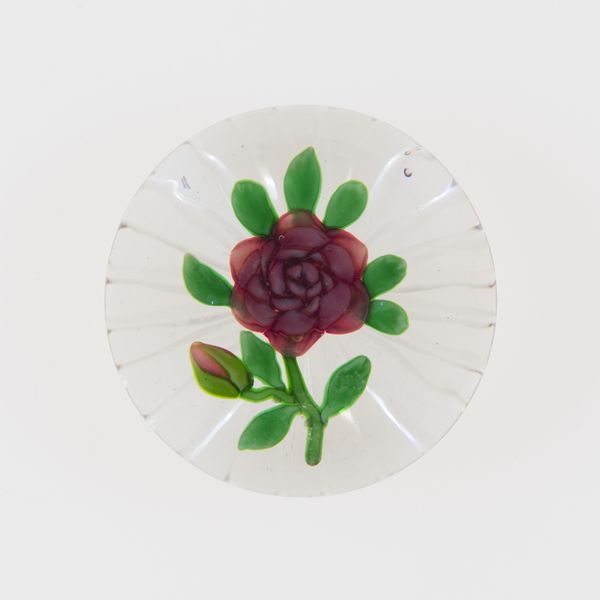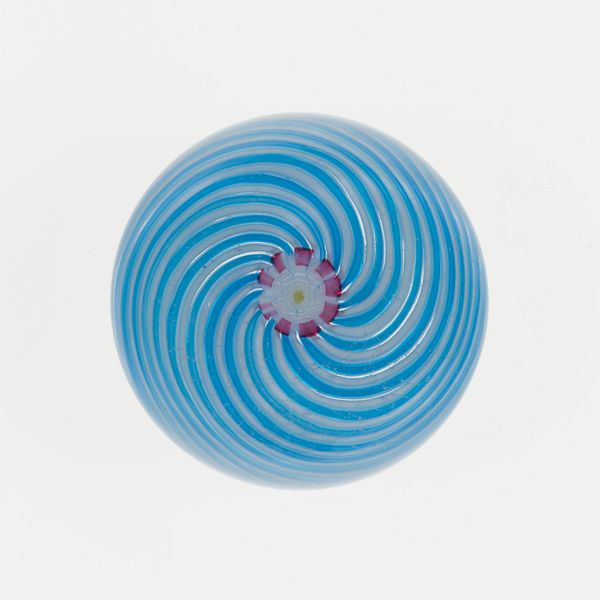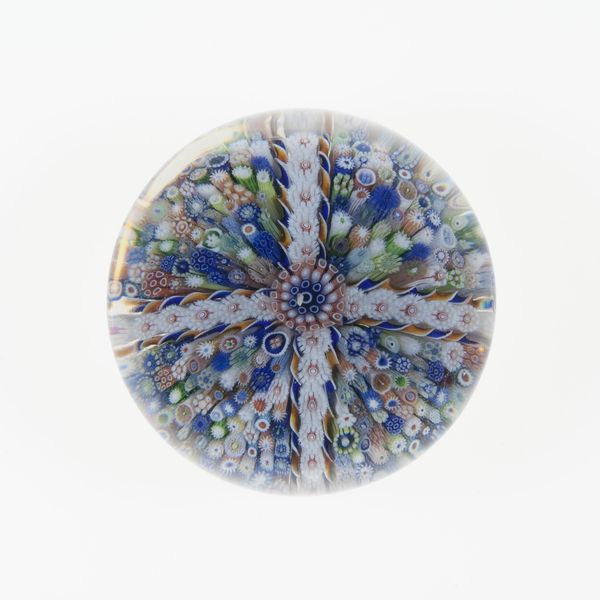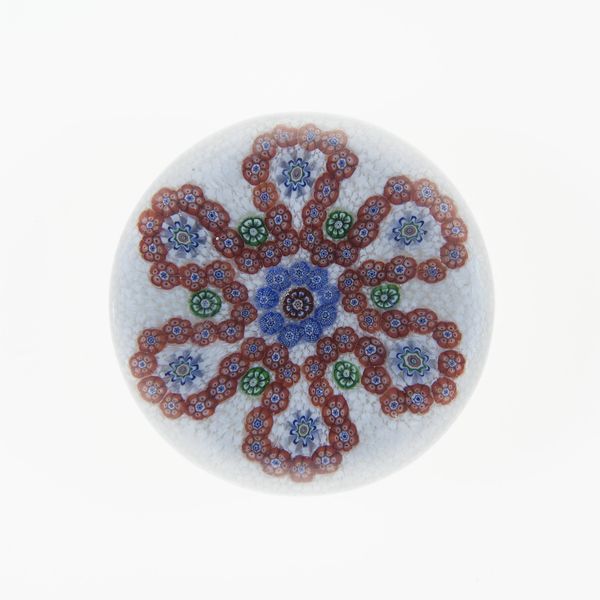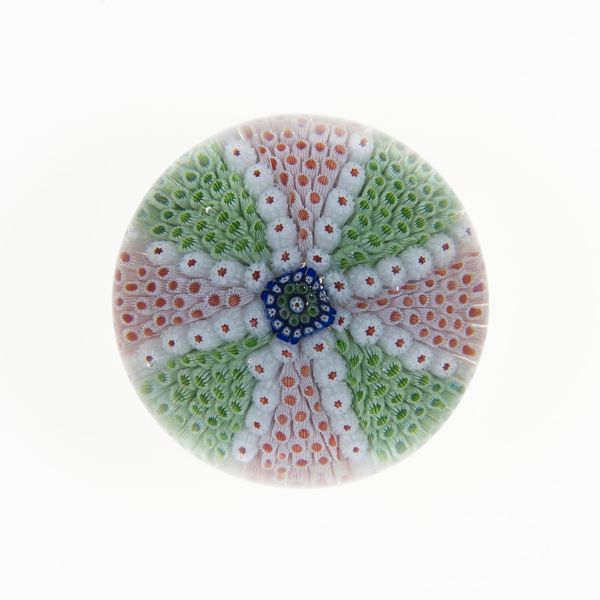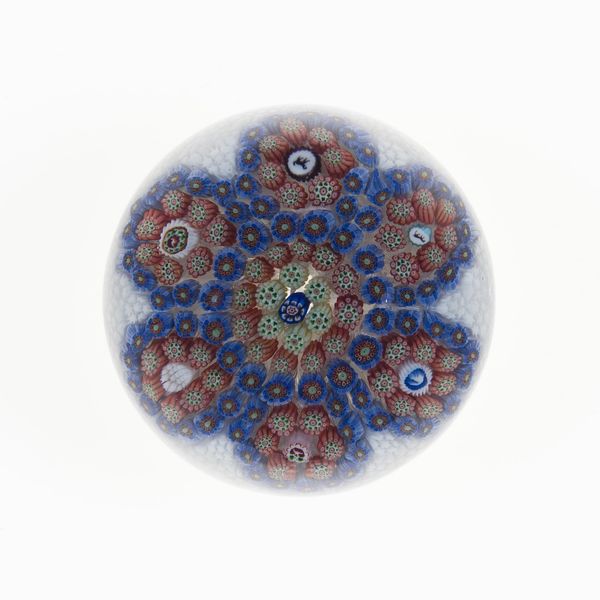
paper, glass
#
circular oval feature
#
egg art
#
3d printed part
#
swirl
#
circular organic
#
round design
#
bright focal point
#
paper
#
glass
#
white focal point
#
france
#
round circular shape
#
nature closeup
Dimensions: Diam. 7.3 cm (2 7/8 in.)
Copyright: Public Domain
Editor: This delicate "Paperweight," made from glass around 1845 to 1860 by the Clichy Glasshouse in France, is currently housed at the Art Institute of Chicago. The object's intricate floral design feels like a preserved memory, but what do you see in this piece, looking through the lens of its symbols and imagery? Curator: The floral motif immediately pulls us into the Victorian era's fascination with floriography—the language of flowers. Each bloom held a specific meaning. While we can’t be sure of Clichy’s intention, consider how the meticulous arrangement evokes the desire to capture fleeting beauty and transform it into something permanent, almost timeless, don't you think? Editor: I hadn't considered that! The idea of freezing a moment through the glass. Are there other possible interpretations that the symbolism could imply? Curator: Absolutely. The glass itself is crucial. Think about the symbolic weight of glass throughout history – clarity, fragility, but also a barrier. Perhaps the flower encased represents something precious, protected from the outside world. Moreover, the rounded shape has womb-like qualities; therefore it feels as though nature itself is being carefully incubated, frozen in a perpetual, self-contained state of potential. Editor: That gives me a lot to consider. So, the glass itself adds layers of meaning beyond just being a medium. Curator: Precisely. It contributes to the emotional and psychological resonance, allowing this object to function as more than just a decorative piece; it's a miniature reliquary of captured time and encoded sentiments. Editor: It's fascinating how much meaning can be packed into such a small object. I’ll definitely look at paperweights differently from now on. Curator: Indeed! And isn't that the power of visual symbols? To spark connections across time and culture, enriching our understanding of the past and ourselves?
Comments
No comments
Be the first to comment and join the conversation on the ultimate creative platform.
